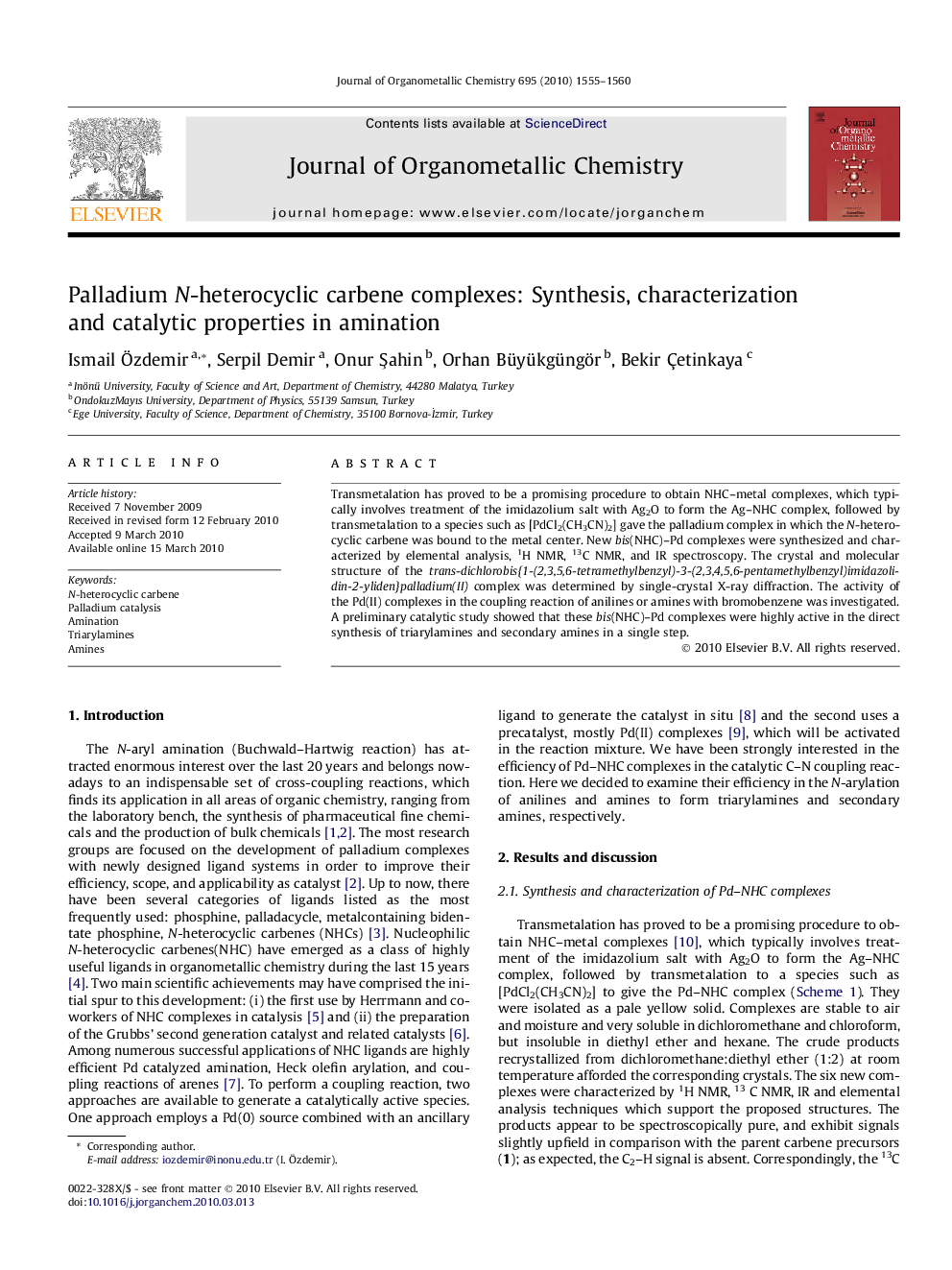| Article ID | Journal | Published Year | Pages | File Type |
|---|---|---|---|---|
| 1325881 | Journal of Organometallic Chemistry | 2010 | 6 Pages |
Transmetalation has proved to be a promising procedure to obtain NHC–metal complexes, which typically involves treatment of the imidazolium salt with Ag2O to form the Ag–NHC complex, followed by transmetalation to a species such as [PdCl2(CH3CN)2] gave the palladium complex in which the N-heterocyclic carbene was bound to the metal center. New bis(NHC)–Pd complexes were synthesized and characterized by elemental analysis, 1H NMR, 13C NMR, and IR spectroscopy. The crystal and molecular structure of the trans-dichlorobis{1-(2,3,5,6-tetramethylbenzyl)-3-(2,3,4,5,6-pentamethylbenzyl)imidazolidin-2-yliden}palladium(II) complex was determined by single-crystal X-ray diffraction. The activity of the Pd(II) complexes in the coupling reaction of anilines or amines with bromobenzene was investigated. A preliminary catalytic study showed that these bis(NHC)–Pd complexes were highly active in the direct synthesis of triarylamines and secondary amines in a single step.
Graphical abstractA simple and efficient methodology for the synthesis of triarylamines and secondary amines in a single step has been demonstrated using palladium–NHC catalyst.Figure optionsDownload full-size imageDownload as PowerPoint slide
